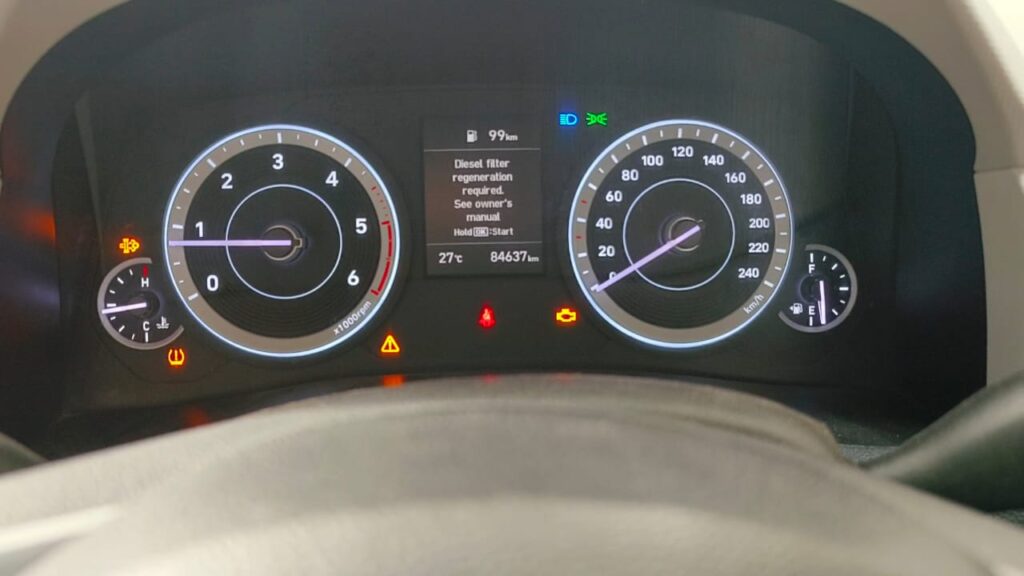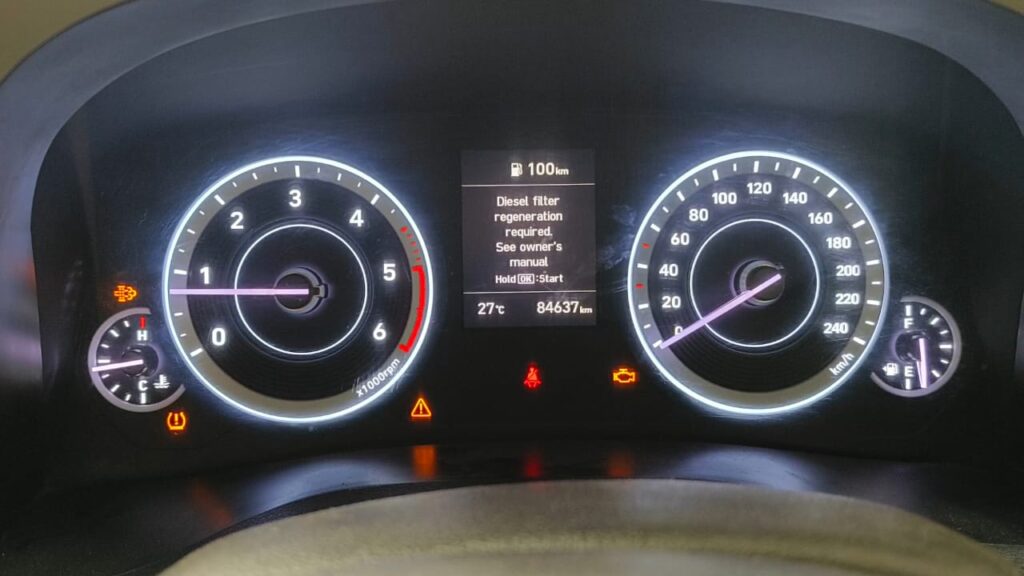Is your dashboard flashing “Diesel Filter Regeneration Required, See Owner’s Manual”? Don’t ignore it! Learn what a DPF is, why regeneration is critical, and the steps you need to take to prevent costly repairs. Your complete guide to diesel particulate filter health.

That sudden message on your dashboard—“Diesel Filter Regeneration Required, See Owner’s Manual”—can be confusing and a bit alarming. But don’t worry; it’s your vehicle’s way of asking for a little help. Ignoring this warning, however, can lead to severe and expensive damage. This article breaks down everything you need to know about your diesel particulate filter (DPF) and the regeneration process to keep your vehicle running cleanly and efficiently.
What is a Diesel Particulate Filter (DPF)
First, let’s understand the part in question. The Diesel Particulate Filter (DPF) is a critical emissions control device found in all modern diesel vehicles. Its job is to capture and store the soot and particulate matter produced during the engine’s combustion process, preventing these harmful particles from being released into the atmosphere. Think of it as a highly sophisticated sieve that traps the exhaust soot. Over time, as this soot accumulates, the filter begins to clog, and your vehicle must initiate a process to clean it: this is known as regeneration.
What is DPF Regeneration? The Self-Cleaning Process
Regeneration is the DPF’s self-cleaning cycle. It’s the process of burning off the accumulated soot at very high temperatures (around 600°C), converting it into a much smaller amount of ash, which is then expelled from the filter. This restores the DPF’s ability to trap more soot and maintain proper exhaust flow and engine performance. There are two primary types of regeneration:
Passive Regeneration: This occurs automatically during normal driving at sustained speeds, like on a highway. The exhaust temperatures naturally become high enough to burn off the soot without you ever noticing.
Active Regeneration: When a vehicle is driven primarily on short, low-speed trips (city driving), the exhaust never gets hot enough for passive regeneration. In this case, the vehicle’s computer will initiate an active regeneration. It injects a small amount of extra fuel into the exhaust stream to dramatically increase the temperature and burn off the soot.
“Regeneration Required” What Your Car is Telling You
The “Diesel Filter Regeneration Required, See Owner’s Manual” warning is a direct request from your vehicle’s computer. It means that the soot load in the DPF has reached a high level and the normal, automatic active regeneration cycles have not been successful—often because the driving cycle was interrupted.
This is a critical stage. The vehicle is giving you a chance to complete a driving cycle that will allow the regeneration to finish. If you see this message, you need to take action soon to prevent the filter from becoming overly clogged.
How to Respond: Action Steps When the Warning Appears
When the message appears, your immediate goal is to allow the active regeneration process to complete. Here is the standard procedure, but always prioritize the specific instructions in your owner’s manual.
Do Not Turn Off the Engine: If you are driving and notice the message, and it is safe to continue, do so.
Find a Safe Route: Drive the vehicle for approximately 20-30 minutes at a consistent speed above 40-50 mph on a highway or open road. This sustained driving provides the necessary conditions for the regeneration cycle to initiate and finish.
Ensure Safety: During an active regeneration, you may notice a hot, smoky smell from the exhaust, a change in engine idle speed, or the operation of cooling fans after you stop. This is normal.
If You Must Stop: If you cannot complete the drive immediately, try to do so as soon as possible within the next few driving sessions.
Table of Contents
The Consequences of Ignoring the Warning
Failing to complete a requested regeneration is the primary cause of DPF failure. If the soot continues to build up beyond a critical point, it can lead to:
Clogged DPF: A severely clogged filter will restrict exhaust flow, causing a significant loss of power, reduced fuel economy, and poor performance.
Forced Stationary Regeneration: A dealership or repair shop will have to perform a forced regeneration using a specialized scan tool, which is an expensive service.
DPF Replacement: In the worst-case scenario, the DPF becomes so clogged that it cannot be cleaned and must be replaced. This is an extremely costly repair, often running into thousands of dollars.
Conclusion: Heed the Warning and Protect Your Investment
The “Diesel Filter Regeneration Required, See Owner’s Manual” message is not a suggestion; it is a required maintenance alert from your vehicle. By understanding that your DPF needs periodic cleaning and knowing how to facilitate the regeneration process, you are taking a proactive role in your vehicle’s health. The most important takeaway is simple when the warning light comes on, your owner’s manual for model-specific guidance and take your vehicle for a sustained drive immediately. This small, timely action is the single most effective way to ensure your diesel vehicle’s longevity, performance, and to avoid a staggering repair bill down the road. Your DPF—and your wallet—will thank you.
Diesel particulate filter warning Understanding the DPF Light
Hybrid vs. EV Adoption and Infrastructure: The Future of Mobility in India
